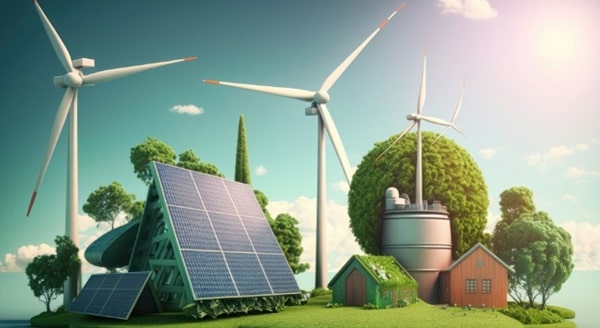India is making significant strides towards a clean energy future, presenting an unparalleled investment opportunity of $500 billion over the next decade. This ambitious plan aligns with global climate goals and India’s commitment to achieving 450 gigawatts (GW) of renewable energy capacity by 2030. This article explores the implications, opportunities, and challenges associated with this substantial investment.
The Scope of the Investment

The $500 billion investment is part of a broader strategy to enhance India’s renewable energy infrastructure. The allocation includes:
- $300 billion for wind and solar power infrastructure.
- $50 billion for grid firming investments such as gas peakers, hydro, and battery storage.
- $150 billion for expanding and modernizing transmission and distribution networks.
These investments aim to not only increase renewable energy capacity but also improve energy security by reducing reliance on expensive fossil fuel imports. This shift is economically viable due to the decreasing costs of solar energy, which is now cheaper than coal in India.
Economic and Environmental Benefits
Investing in clean energy is expected to bring numerous benefits:
- Energy Security: By reducing dependency on fossil fuel imports, India can mitigate the risks associated with volatile global oil prices.
- Economic Growth: The development of renewable energy infrastructure will create jobs and stimulate economic activities.
- Environmental Sustainability: Transitioning to clean energy sources will significantly reduce greenhouse gas emissions, contributing to global climate goals.
Global and Domestic Investment Interest
India’s clean energy sector has attracted considerable interest from global investors, including private equity firms, pension funds, and sovereign wealth funds. Major international players like the Canada Pension Plan Investment Board and KKR have made substantial investments in the Indian renewable energy sector. This influx of global capital is crucial for financing the massive infrastructure projects required to meet the 2030 targets.
Government Initiatives and Policies
The Indian government has implemented several policies to facilitate this transition:
- National Green Hydrogen Mission: With an investment of $2.4 billion, this initiative aims to develop green hydrogen as a clean fuel alternative for industries such as steel and shipping.
- Subsidies for Battery Storage: To address the intermittency of renewable energy sources like solar and wind, the government is subsidizing battery storage projects.
- Incentives for Electric Vehicles (EVs): Increased customs duty on imported EVs and incentives for domestic manufacturing are designed to boost the local EV industry.
Challenges and the Path Forward
While the potential is vast, several challenges need to be addressed:
- Infrastructure Development: Significant upgrades to the grid infrastructure are necessary to handle the increased capacity from renewable sources.
- Financing and Investment Risks: Attracting and managing the required investment involves mitigating risks related to regulatory changes, land acquisition, and project execution.
- Technological Advancements: Continued innovation in storage solutions and grid management is essential to ensure the reliability and efficiency of renewable energy systems.
Conclusion
India’s $500 billion clean energy investment opportunity represents a monumental step towards a sustainable future. By leveraging global and domestic investments, enhancing policy frameworks, and focusing on technological advancements, India can achieve its renewable energy targets and set an example for other developing nations. This initiative not only promises substantial economic and environmental benefits but also plays a critical role in the global fight against climate change.

